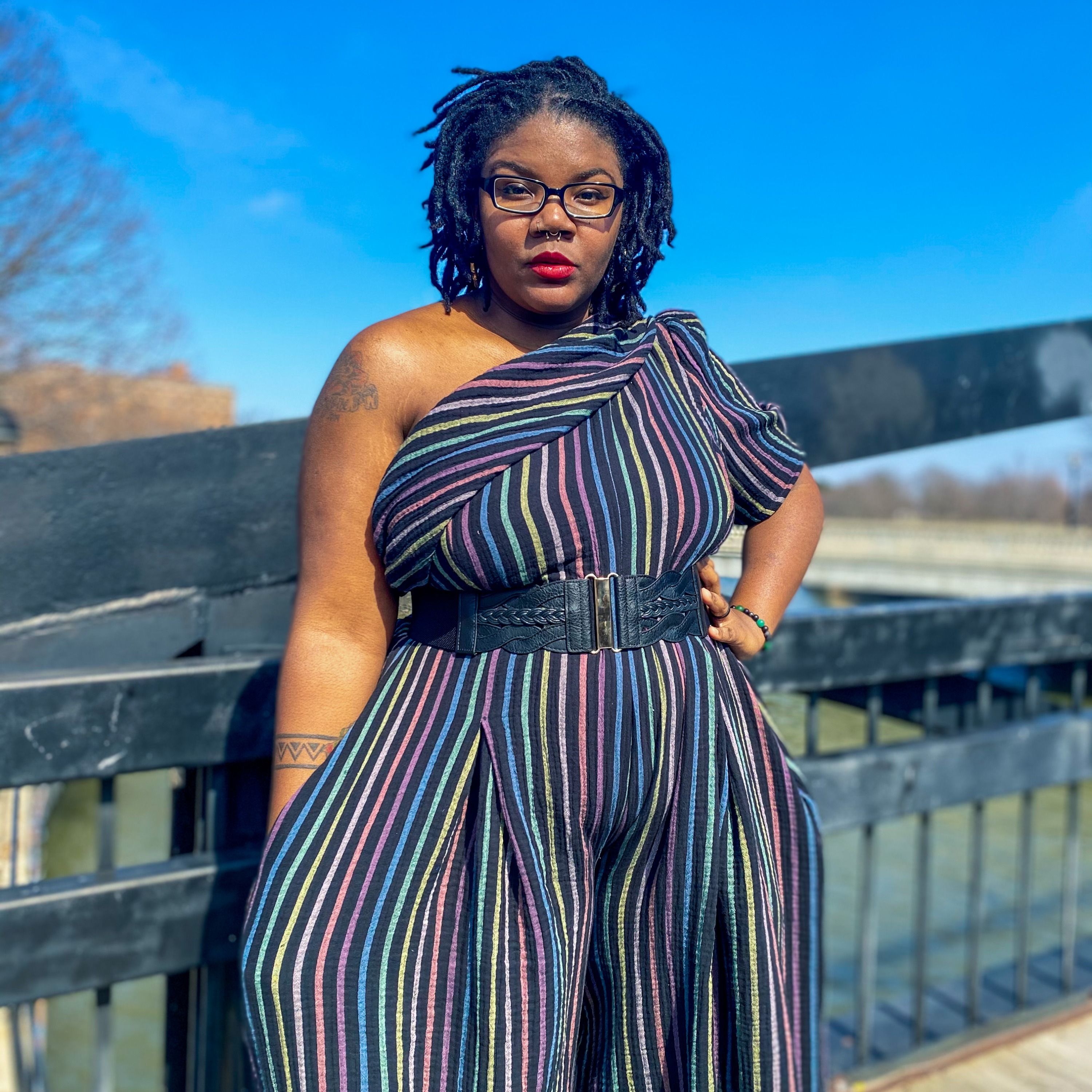Join Black Women Stitch on Patreon.
Tracy Perry is a self-taught artist with 30+ years of experience in sewing and art to create unique dolls using fabric or clay. She's been creating and selling dolls since 2008. Tracy was the owner and operator of ImaginePerryDolls and TerranDollmaker. Tracy endeavors to make dolls that show the many colors and uniqueness. She strongly believes that everyone should have access to a doll that looks like them or inspires them. Her dolls have appeared in an issue of Art Dolls Quarterly. And she has a sincere fan base that includes Virginia-based doll clubs, and collectors from around the United States.
Host: Lisa Woolfork is an associate professor of African American Literature and Culture. Her teaching and research explore Black women writers, the fiction of Black identity, trauma theory, and American slavery. She is the convener and founder of Black Women Stitch, the sewing group where Black Lives Matter. She is also the host/producer of Stitch Please, a weekly audio podcast that centers on Black women, girls, and femmes in sewing. In the summer of 2017, she became a founding member of Black Lives Matter Charlottesville. Actually, she is active in a variety of university and community initiatives, including the College Fellows Program to reshape the undergraduate general education curriculum.
Insights from this episode:
- How Tracy got started in doll making
- Insights into the different types of dolls
- Differences between soft sculpture and cloth dolls
- Tracy’s button-jointed doll experience and the lessons she learned
- Tracy’s favorite tools in doll making
- Tracy’s process in doll making and choosing the personality, shape, outfit, and character
Quotes from the show:
- “Plushies can be a novelty, they can represent lots of different things: they can be abstract, they can be representational” -Lisa Woolfork in “Stitch Please”
- “Don’t overcommit if you are a solopreneur” -Tracy Perry in “Stitch Please”
- “You love dolls, you love doll making, and that love was very much tested and it stood its test but you also got to learn lessons about boundaries, about protecting the peace of your creative life” -Lisa Woolfork in “Stitch Please”
- “My number one tool is my hemostat” -Tracy Perry in “Stitch Please”
- “If you have something that is working for you, don’t change” -Lisa Woolfork in “Stitch Please”
- “One of the things I love about your dolls is how they look like you” -Lisa Woolfork in “Stitch Please”
- “I just try to do what I like, I was just bending myself backward trynna say ‘people don’t like this, people don’t like that,’ then I would find out that people did like it” -Tracy Perry in “Stitch Please”
- “I think too often when women, especially Black women, wanna do something that’s self-directive, self-determined, self-reflective, it’s seen as selfish, which is absolutely false” -Lisa Woolfork in “Stitch Please”
- “The work that comes from your hands should reflect the deepest essence of who you are, as well as from the inside and outside” -Lisa Woolfork in “Stitch Please”
Stay Connected:
Lisa Woolfork
Instagram: Lisa Woolfork
Twitter: Lisa Woolfork
Tracy Perry
Website: Seams Like Tracy
Instagram: TR Perry
YouTube: Seams Like Tracy
Sign up for the Black Women Stitch quarterly newsletter
Check out our merch here
Leave a BACKSTITCH message and tell us about your favorite episode.
Join the Black Women Stitch Patreon
Check out our Amazon Store
Stay Connected:
YouTube: Black Women Stitch
Instagram: Black Women Stitch
Facebook: Stitch Please Podcast


